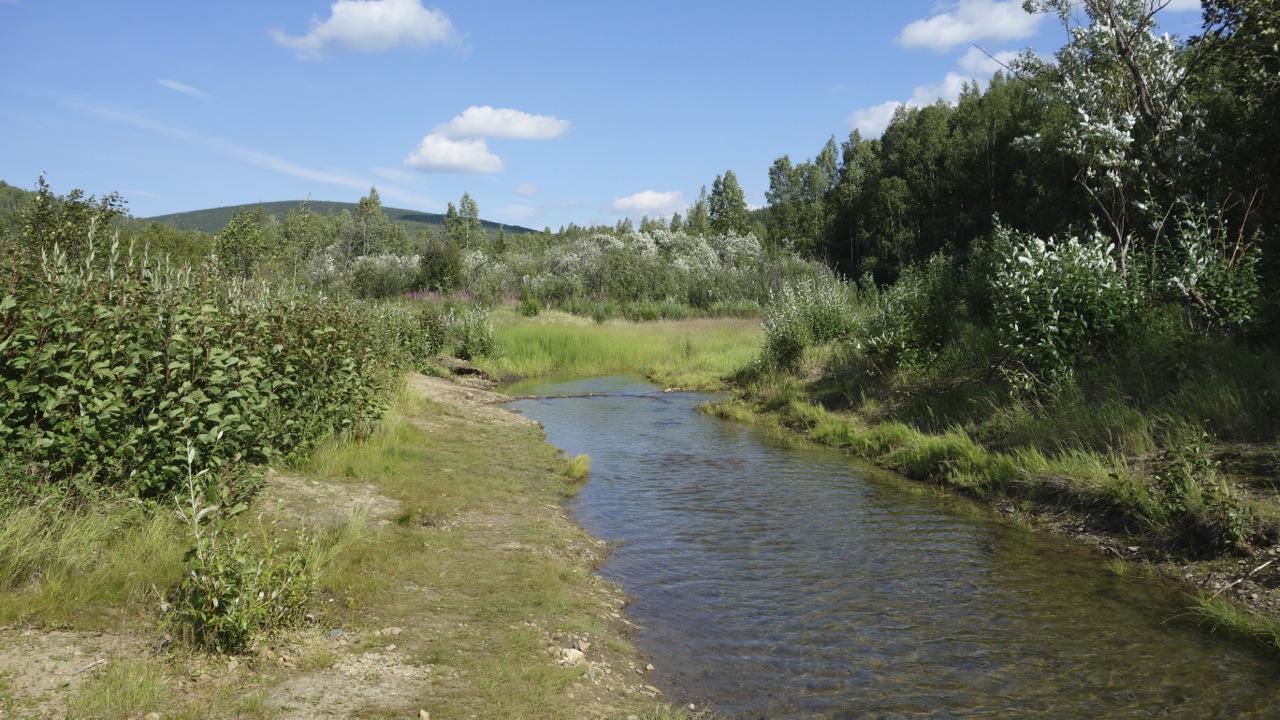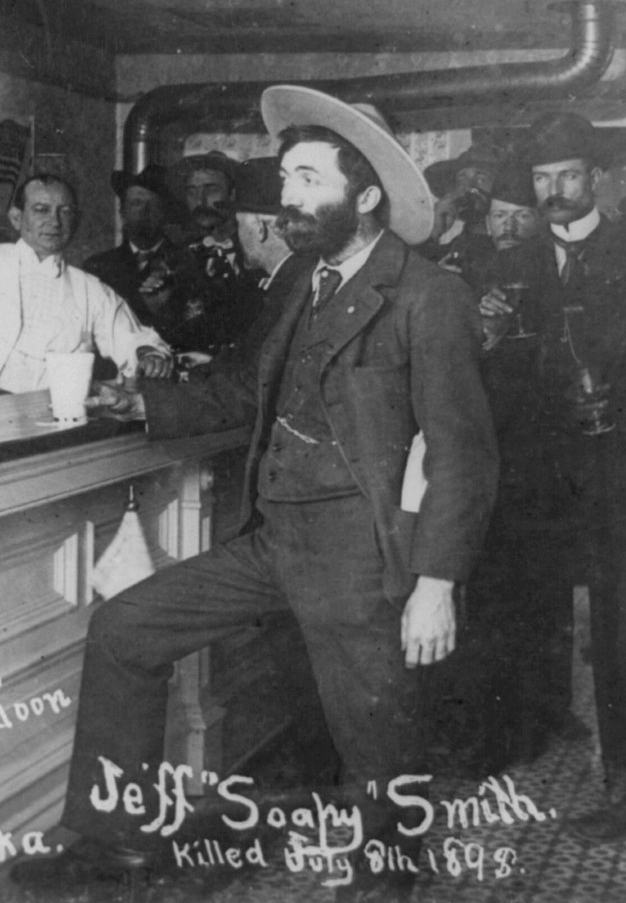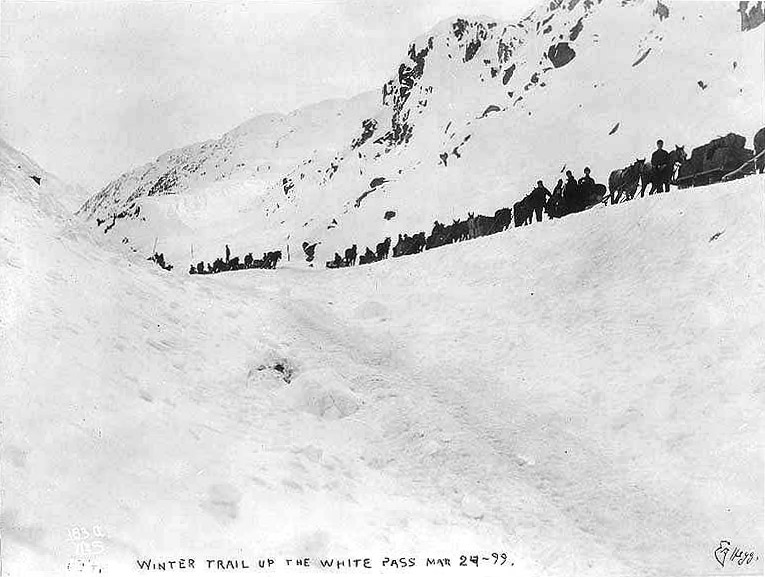|
District Of Alaska
The District of Alaska was the federal government’s designation for Alaska from May 17, 1884 to August 24, 1912, when it became Alaska Territory. Previously (1867–1884) it had been known as the Department of Alaska, a military designation. The designation as a district meant that Alaska became an incorporated but unorganized territory with a civil government. The governor of the District of Alaska was appointed by the president of the United States. Prelude to District status At the time of the 1867 Alaska Purchase, legislators in Washington, D.C., were occupied with post–Civil War reconstruction issues, and had little time to dedicate to Alaska. As a department, Alaska was handled as a strategic military area, variously under the jurisdiction of the U.S. Army (until 1877), the United States Department of the Treasury (from 1877 until 1879) and the U.S. Navy (from 1879 until 1884). By 1884, the civilian population had grown to the point where President Chester A. Ar ... [...More Info...] [...Related Items...] OR: [Wikipedia] [Google] [Baidu] |
Territory Of Alaska
The Territory of Alaska or Alaska Territory was an organized incorporated territory of the United States from August 24, 1912, until Alaska was granted statehood on January 3, 1959. The territory was previously Russian America, 1784–1867; the Department of Alaska, 1867–1884; and the District of Alaska, 1884–1912. Origin Passage of the 1899 Criminal Code which, among other things, included a tax on liquor, led to increased calls for Alaskan representation in Congress, and the debate finally ended on August 24, 1912, when the Alaska District became an organized, incorporated territory of the United States. The ''Second Organic Act'' of 1912 renamed the District the Territory of Alaska. By 1916, its population was about 58,000. James Wickersham, a Delegate to Congress, introduced Alaska's first statehood bill, but it failed for lack of interest from Alaskans. Even President Warren G. Harding's unprecedented visit in 1923 (just days before his death) could not create wi ... [...More Info...] [...Related Items...] OR: [Wikipedia] [Google] [Baidu] |
Klondike, Yukon
The klondike () is a region of the territory of Yukon, in northwestern Canada. It lies around the Klondike River, a small river that enters the Yukon River from the east at Dawson City. The area is merely an informal geographic region, and has no function to the territory as any kind of administrative region. The Klondike is famed due to the Klondike Gold Rush, which started in 1896 and lasted until 1899. Gold has been mined continuously in that area, except for a pause in the late 1960s and early 1970s. The name "Klondike" evolved from the Hän word ''Tr'ondëk'', which means " hammerstone water". Early gold seekers found it difficult to pronounce the First Nations word, so "Klondike" was the best approximation. Climate The climate is warm in the short summer, and very cold during the long winter. By late October, ice forms over the rivers. For the majority of the year, the ground is frozen to a depth of . Politics Klondike is a district of the Legislative Assembly ... [...More Info...] [...Related Items...] OR: [Wikipedia] [Google] [Baidu] |
Fairbanks, Alaska
Fairbanks is a home rule city and the borough seat of the Fairbanks North Star Borough in the U.S. state of Alaska. Fairbanks is the largest city in the Interior region of Alaska and the second largest in the state. The 2020 Census put the population of the city proper at 32,515, and the population of the Fairbanks North Star Borough at 95,655 making it the second most populous metropolitan area in Alaska after Anchorage. The Metropolitan Statistical Area encompasses all of the Fairbanks North Star Borough and is the northernmost Metropolitan Statistical Area in the United States, located by road ( by air) south of the Arctic Circle. Fairbanks is home to the University of Alaska Fairbanks, the founding campus of the University of Alaska system. History Native American presence Athabascan peoples have used the area for thousands of years, although there is no known permanent Alaska Native settlement at the site of Fairbanks. An archaeological site excavated ... [...More Info...] [...Related Items...] OR: [Wikipedia] [Google] [Baidu] |
Steamboat
A steamboat is a boat that is marine propulsion, propelled primarily by marine steam engine, steam power, typically driving propellers or Paddle steamer, paddlewheels. Steamboats sometimes use the ship prefix, prefix designation SS, S.S. or S/S (for 'Screw Steamer') or PS (for 'Paddle Steamer'); however, these designations are most often used for steamships. The term ''steamboat'' is used to refer to smaller, insular, steam-powered boats working on lakes and rivers, particularly riverboats. As using steam became more reliable, steam power became applied to larger, ocean-going vessels. Background Limitations of the Newcomen steam engine Early steamboat designs used Newcomen atmospheric engine, Newcomen steam engines. These engines were large, heavy, and produced little power, which resulted in an unfavorable power-to-weight ratio. The Newcomen engine also produced a reciprocating or rocking motion because it was designed for pumping. The piston stroke was caused by a water jet i ... [...More Info...] [...Related Items...] OR: [Wikipedia] [Google] [Baidu] |
Felix Pedro
Felice Pedroni (April 16, 1858 – July 22, 1910), known best to Americans by his Hispanicized alias Felix Pedro, was an Italian immigrant whose discovery of gold in Interior Alaska marked the beginning of the 1902 Fairbanks Gold Rush. Early life Pedro was born April 16, 1858 to a family of subsistence farmers in the small village of Trignano administrated by Fanano. This village is in the Apennine Mountains into the Province of Modena. He was the youngest of six brothers. Pedroni fled home in 1881 following the death of his father. He arrived in New York City and quickly assumed the name Felix Pedro. He traveled to New York City, Ohio, Washington (U.S. state), Washington, British Columbia, and the Yukon, working in each place until he earned enough to travel again. Once in Alaska, Pedro panned for gold in the Fortymile River, Fortymile, the Piledriver Slough near present-day Salcha, and various other waterways, including the "Lost Creek" in which Pedro and his partner Tom Gilmore ... [...More Info...] [...Related Items...] OR: [Wikipedia] [Google] [Baidu] |
Nome, Alaska
Nome (; ik, Sitŋasuaq, ) is a city in the Nome Census Area in the Unorganized Borough of Alaska, United States. The city is located on the southern Seward Peninsula coast on Norton Sound of the Bering Sea. It had a population of 3,699 recorded in the 2020 census, up from 3,598 in 2010. Nome was incorporated on April 9, 1901, and was once the most-populous city in Alaska. Nome lies within the region of the Bering Straits Native Corporation, which is headquartered in Nome. The city of Nome also claims to be home to the world's largest gold pan, although this claim has been disputed by the Canadian city of Quesnel, British Columbia. In the winter of 1925, a diphtheria epidemic raged among Alaska Natives in the Nome area. Fierce territory-wide blizzard conditions prevented the delivery of a life-saving diphtheria antitoxin serum by airplane from Anchorage. A relay of dog sled teams was organized to deliver the serum. Today, the Iditarod Dog Sled Race follows the same rou ... [...More Info...] [...Related Items...] OR: [Wikipedia] [Google] [Baidu] |
Juneau, Alaska
The City and Borough of Juneau, more commonly known simply as Juneau ( ; tli, Dzánti K'ihéeni ), is the capital city of the state of Alaska. Located in the Gastineau Channel and the Alaskan panhandle, it is a unified municipality and the second- largest city in the United States by area. Juneau was named the capital of Alaska in 1906, when the government of what was then the District of Alaska was moved from Sitka as dictated by the U.S. Congress in 1900. The municipality unified on July 1, 1970, when the city of Juneau merged with the city of Douglas and the surrounding Greater Juneau Borough to form the current municipality, which is larger by area than both Rhode Island and Delaware. Downtown Juneau () is nestled at the base of Mount Juneau and across the channel from Douglas Island. As of the 2020 census, the City and Borough had a population of 32,255, making it the third-most populous city in Alaska after Anchorage and Fairbanks. Juneau experiences a daily i ... [...More Info...] [...Related Items...] OR: [Wikipedia] [Google] [Baidu] |
Shootout On Juneau Wharf
The Shootout on Juneau Wharf was a gunfight between Jefferson Randolph "Soapy" Smith, Frank H. Reid, and Jesse Murphy that took place on Friday, July 8, 1898, at approximately 9:15 p.m. in Skagway, District of Alaska, in the United States. Smith was shot in the heart and died shortly afterwards, and Reid died of his injuries 12 days later. Background The founding of Skagway, a port town on the Inside Passage in Alaska's panhandle, in December 1897, attracted western crime boss Jefferson Randolph "Soapy" Smith and his gang of confidence men, as the town was the primary American starting point leading to the White Pass Trail and ultimately the Klondike gold fields, which had been discovered in 1896 and triggered a massive gold rush in the region. Smith had been well known as a streetside confidence trickster and racketeer in Denver and Creede, Colorado, where he was threatened with imprisonment as a criminal in 1895 and fled the state. When interest in the gold rush peake ... [...More Info...] [...Related Items...] OR: [Wikipedia] [Google] [Baidu] |
Soapy Smith
Jefferson Randolph "Soapy" Smith II (November 2, 1860 – July 8, 1898) was an American con artist and gangster in the American frontier. Smith operated confidence schemes across the Western United States, and had a large hand in organized criminal operations in both Colorado and the District of Alaska. Smith gained notoriety through his "prize soap racket," in which he would sell bars of soap with prize money hidden in some of the bars' packaging in order to increase sales. However, through sleight-of-hand, he would ensure that only members of his gang purchased "prize" soap. The racket led to his sobriquet of "Soapy." The success of his soap racket and other scams helped him finance three successive criminal empires in Denver and Creede, both in Colorado, and in Skagway, Alaska. He was killed in the shootout on Juneau Wharf in Skagway, on July 8, 1898. Early years Jefferson Smith was born on November 2, 1860, in Coweta County, Georgia, to a wealthy family. His grandfather ... [...More Info...] [...Related Items...] OR: [Wikipedia] [Google] [Baidu] |
White Pass
White Pass, also known as the Dead Horse Trail, (elevation ) is a mountain pass through the Boundary Ranges of the Coast Mountains on the border of the U.S. state of Alaska and the province of British Columbia, Canada. It leads from Skagway, Alaska, to the chain of lakes at the headwaters of the Yukon River, Crater Lake, Lake Lindeman, and Bennett Lake. History The White Pass was closely controlled by the Chilkoot Indians and was unknown to non-natives until 1887. William Ogilvie had heard reports of a low pass near the Deyes Inlet to the headwaters of the Lewes River (Yukon River), while in Juneau. The Ogilvie expedition was on its way to the Yukon territory in order to survey and mark the international boundary on the Yukon River. In June 1887, Ogilvie's expedition was at the head of Taiya Inlet doing a survey from Pyramid Island up through the Chilkoot Pass. William Moore, who had travelled up from Juneau on the steamer, had experience building roads in mountainous are ... [...More Info...] [...Related Items...] OR: [Wikipedia] [Google] [Baidu] |
Chilkoot Trail
The Chilkoot Trail is a 33-mile (53 km) trail through the Coast Mountains that leads from Dyea, Alaska, in the United States, to Bennett, British Columbia, in Canada. It was a major access route from the coast to Yukon goldfields in the late 1890s. The trail became obsolete in 1899 when a railway was built from Dyea's neighbor port Skagway along the parallel White Pass trail.Gold rush stories The Chilkoot Trail and Dyea Site was designated a U.S. in 1978. In 1987, the trail was designated a |
Miner
A miner is a person who extracts ore, coal, chalk, clay, or other minerals from the earth through mining. There are two senses in which the term is used. In its narrowest sense, a miner is someone who works at the rock face; cutting, blasting, or otherwise working and removing the rock. In a broader sense, a "miner" is anyone working within a mine, not just a worker at the rock face. Mining is one of the most dangerous trades in the world. In some countries, miners lack social guarantees and in case of injury may be left to cope without assistance. In regions with a long mining tradition, many communities have developed cultural traditions and aspects specific to the various regions, in the forms of particular equipment, symbolism, music, and the like. Roles Different functions of the individual miner. Many of the roles are specific to a type of mining, such as coal mining. Roles considered to be "miners" in the narrower sense have included: * Hewer (also known as "cake" or ... [...More Info...] [...Related Items...] OR: [Wikipedia] [Google] [Baidu] |










